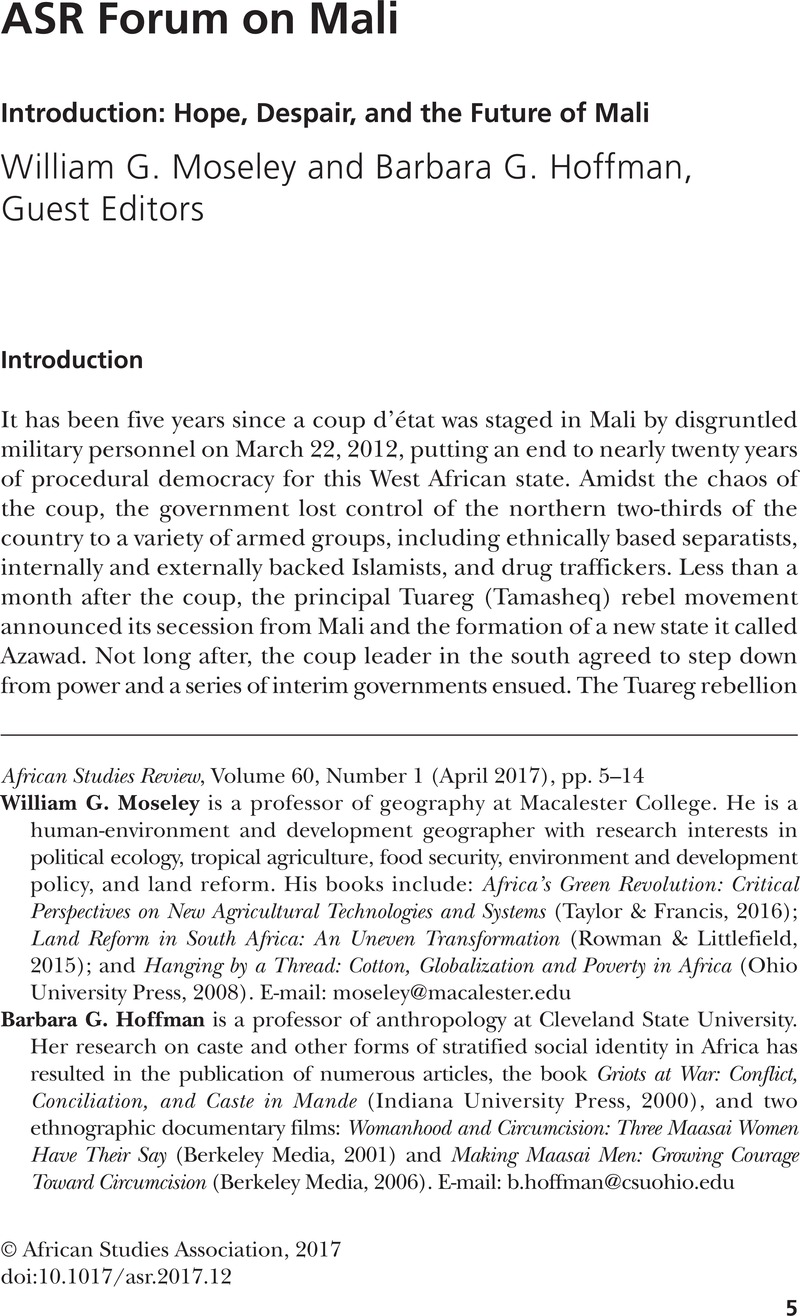Crossref Citations
This article has been cited by the following publications. This list is generated based on data provided by Crossref.
Morgan, Julia D.
and
Moseley, William G.
2020.
The secret is in the sauce: foraged food and dietary diversity among female farmers in southwestern Burkina Faso.
Canadian Journal of Development Studies / Revue canadienne d'études du développement,
Vol. 41,
Issue. 2,
p.
296.
Steuer, Noemi
2020.
“Murdered Mozarts.” narrative of a previous malian student generation in the era of the crumbling state.
Human Affairs,
Vol. 30,
Issue. 3,
p.
468.
Roy, Alexis
2021.
Alpha Oumar Konaré. Histoire des partis politiques au Mali: Du pluralisme politique au parti unique, 1946–1968. Bamako: Cauris Livre, 2016. 607 pp. €57. Paper. ISBN: 978-9995260309..
African Studies Review,
Vol. 64,
Issue. 3,
p.
E59.
Korotayev, Andrey
and
Khokhlova, Alina
2022.
New Wave of Revolutions in the MENA Region.
p.
191.
Moseley, William G.
and
Ouedraogo, Melanie
2022.
When Agronomy Flirts with Markets, Gender, and Nutrition: A Political Ecology of the New Green Revolution for Africa and Women’s Food Security in Burkina Faso.
African Studies Review,
Vol. 65,
Issue. 1,
p.
41.
Hasenöhrl, Syntia
2023.
Affective subjectifications and social media.
L’Ouest Saharien,
Vol. Vol. 18,
Issue. 1,
p.
83.





